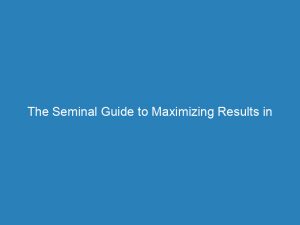In the fast-paced world of digitalmarketing, competition for customers is fierce. Businesses are constantly looking for effective strategies to stand out and attract new customers.
One such strategy that has proven to be incredibly vital is Search Engine Marketing (SEM). By utilizing paid advertising on platforms like Google, businesses can bid on relevant keywords in an ad auction, and set a click budget to improve their visibility on search engine results pages (SERPs).
However, effective SEM goes beyond just bidding on keywords. It requires a strategic approach involving optimizing paid search ads, managing variables like keywords, budget, and copy, and utilizing tools that help analyze ad performance and competitor strategies.
Join us as we delve into the world of SEM, and explore the secrets to success in digital marketing.
Table of Contents
- sem in digital marketing
- The Importance Of Sem In Digital Marketing
- Paid Advertising And Its Role In Sem
- Google: The Key Platform For Sem
- Bidding On Keywords And Setting Budgets In An Ad Auction
- Determining Ad Placement: Keyword Relevance And Quality Score
- Creating Compelling Ad Copy With A Call-To-Action
- Impact Of Quality Score And Landing Page Experience On Ad Performance
- Optimizing SEM Strategy: Keywords, Budget, And Copy
sem in digital marketing
SEM (Search Engine Marketing) in digital marketing refers to the practice of using paid advertising on search engines to reach new customers and grow business. It is important for businesses to engage in SEM as it allows them to compete on search engine results pages (SERPs).
Google, being a key platform for SEM, holds a significant share with 35% of product searches originating from its platform. In SEM, businesses bid on keywords in an ad auction and set a budget per click.
Google determines the placement of ads based on keyword relevance and Quality Score. Ad copy plays a crucial role in SEM, as it should be compelling, relevant, and include a strong call-to-action.
Ad performance is impacted by factors such as Quality Score and landing page experience. To effectively implement SEM strategy, optimizing paid search ads and managing variables such as keywords, budget, and copy are essential.
Keyword selection is based on factors like intent, volume, and competition. Proper account and campaign structure play a pivotal role in managing Google Ads campaigns.
Various tools such as HubSpot’s Ad Tracking Software, SEMrush, Google Trends, Keywordtool.Io, Google Ads Keyword Planner, SpyFu, and WordStream can greatly assist in optimizing SEM efforts. These tools offer features like ad analysis, keyword research, search volume tracking, competitor analysis, and ad creation.
To achieve success in digital marketing, it is imperative to optimize SEM campaigns and utilize tools for analysis.
This post updated with new ad network performance data.
Key Points:
- SEM in digital marketing is using paid advertising on search engines to reach new customers and grow business.
- Businesses should engage in SEM to compete on search engine results pages (SERPs).
- Google is a key platform for SEM, with 35% of product searches originating from its platform.
- Businesses bid on keywords in an ad auction and set a budget per click in SEM.
- Ad copy plays a crucial role in SEM and should be compelling, relevant, and include a strong call-to-action.
- Proper account and campaign structure, as well as tools like HubSpot’s Ad Tracking Software, SEMrush, and Google Ads Keyword Planner, are essential for optimizing SEM efforts.
Sources
https://blog.hubspot.com/marketing/search-engine-marketing
https://www.forbes.com/advisor/business/search-engine-marketing-sem/
https://careerfoundry.com/en/blog/digital-marketing/what-is-sem/
https://careerfoundry.com/en/blog/digital-marketing/seo-vs-sem/
Check this out:
? Pro Tips:
1. Use negative keywords: Negative keywords allow you to specify which keywords you don’t want your ad to show up for. This helps you eliminate irrelevant clicks and save on your ad budget.
2. Utilize ad extensions: Ad extensions are additional pieces of information that can be added to your ads, such as your phone number, location, or additional links. They make your ads more comprehensive and provide users with more information, increasing the chances of them clicking on your ad.
3. Test different ad formats: Experiment with different ad formats such as text ads, image ads, and video ads to see which ones drive the highest click-through rates and conversions. Different formats appeal to different types of customers, so it’s important to diversify your ad types.
4. Optimize your landing pages: Your landing page is where users are directed after clicking on your ad. Make sure your landing pages are relevant to the ad copy and provide a clear call-to-action. Test different landing page designs and layouts to find the ones that generate the highest conversion rates.
5. Monitor your competition: Keep an eye on your competitors’ SEM strategies, including the keywords they are bidding on and the ad copy they are using. This will help you identify new opportunities and stay ahead in the competitive digital marketing landscape.
The Importance Of Sem In Digital Marketing
SEM, also known as Search Engine Marketing, is an integral component of digital marketing that plays a crucial role in reaching new customers and growing businesses. In today’s highly competitive online marketplace, simply having a website or online presence is not enough.
To stand out and drive traffic to your website, SEM becomes essential.
One of the primary reasons why SEM is so important is because it allows businesses to effectively compete on search engine results pages (SERPs). When a user performs a search on a search engine like Google, the top positions on the SERPs are usually occupied by paid advertisements.
Without SEM, it can be challenging for businesses to secure such prominent visibility and attract potential customers.
Paid Advertising And Its Role In Sem
Paid advertising forms an integral part of SEM. Through paid advertising, businesses can effectively target and engage their audience.
It enables businesses to display their ads prominently on search engine results pages (SERPs) and reach users who are actively looking for products or services related to their industry.
Google, being the leading search engine, is a key platform for SEM. In fact, research suggests that 35% of product searches begin on Google.
As a result, businesses need to have a strong presence on Google Ads to maximize their SEM efforts and tap into this massive user base.
Google: The Key Platform For Sem
Google Ads, formerly known as Google AdWords, offers businesses a powerful platform to implement their SEM strategies. With more than 3.5 billion daily searches, Google is the undisputed leader in the search engine market.
Therefore, advertising on Google Ads provides businesses with the opportunity to reach a vast audience and drive significant traffic to their websites.
Bidding On Keywords And Setting Budgets In An Ad Auction
In SEM, businesses bid on keywords relevant to their products or services. When a user searches for these keywords, the ads appear on the SERPs.
Keyword bidding takes place in an ad auction, where advertisers compete for ad placements based on their bids and quality score.
Setting a budget per click is an essential aspect of SEM. Businesses determine the maximum amount they are willing to pay for a click on their ad.
This ensures that the SEM campaign remains within the allocated budget and prevents overspending.
Determining Ad Placement: Keyword Relevance And Quality Score
Google determines ad placement based on the relevance of keywords and the Quality Score of the ad. The Quality Score is a metric used by Google to assess the quality and relevance of ads.
It takes into account factors such as click-through rates, ad relevance, and landing page experience.
To improve ad placement, businesses should focus on creating high-quality ads that are relevant to the keywords they bid on. Optimizing the landing page experience can also positively impact the Quality Score and ensure better ad performance.
Creating Compelling Ad Copy With A Call-To-Action
Crafting compelling ad copy is crucial for SEM success. Ad copy should be engaging, relevant, and capture the attention of users.
It should highlight the unique selling proposition of the business and include a strong call-to-action (CTA) to encourage users to take the desired action, such as making a purchase or signing up for a newsletter.
Achieving a high click-through rate and conversion rate heavily relies on the effectiveness of the ad copy. A well-structured and persuasive ad can significantly increase the chances of attracting potential customers and driving them to the desired website.
Impact Of Quality Score And Landing Page Experience On Ad Performance
The Quality Score and landing page experience directly influence the performance of SEM ads. A higher Quality Score indicates that the ad is considered more relevant and of higher quality by Google.
A positive landing page experience enhances the user’s interaction with the website after clicking on the ad.
To maximize ad performance, businesses should focus on optimizing their landing pages. Ensuring fast page load times, relevant and valuable content, and a seamless user experience can lead to higher conversion rates and a better return on investment (ROI) for their SEM campaigns.
Optimizing SEM Strategy: Keywords, Budget, And Copy
Successful SEM strategies require continuous optimization and management of various variables. These variables include keywords, budget allocation, and ad copy.
To effectively optimize SEM campaigns, businesses must:
Using tools specifically designed for SEM can significantly enhance the optimization process. Tools such as HubSpot’s Ad Tracking Software, SEMrush, Google Trends, Keywordtool.Io, Google Ads Keyword Planner, SpyFu, and WordStream offer features like ad analysis, keyword research, search volume tracking, competitor analysis, and ad creation.
Leveraging these tools can streamline SEM efforts and result in better campaign performance.
In conclusion, SEM is a crucial aspect of digital marketing that helps businesses reach new customers and grow their online presence. Paid advertising is essential to compete for visibility on search engine results pages, with Google being the primary platform for SEM.
Bidding on relevant keywords and setting appropriate budgets in an ad auction are vital for campaign success. Creating compelling ad copy, focusing on Quality Score and landing page experience, and optimizing keyword selection, budget allocation, and ad copy are key components of a successful SEM strategy.
Utilizing specialized tools further enhances SEM efforts and improves overall digital marketing performance.
Native Ad Network • Advertising Platform for Marketers • Performance Marketing Tips












